Early March 2018
Spent a few wonderful days in SW Florida at our uncle's place on Sanibel Island. Just so I don't forget any of this, I am posting here.
Of course, Florida is a mecca for naturalists and any trip there is educational, inspirational. Since I was raised in Canada, for me a trip to North America is somewhat of a pilgrimage also. For us Mediterraneans there is a lot to be jealous of : its a place with functioning "protected areas" that are basically bustling with compassionate visitors- an ecotourism wonderland, and a real natural history awareness in the air.
Natural history is practiced in all kind of ways in this State: lots of outsy-doorsy types all around: catch-and-release fishing, family reserve-visiting vacations, shelling (shell hunting), beach combing, sea-watching, hunting, birding - all together!
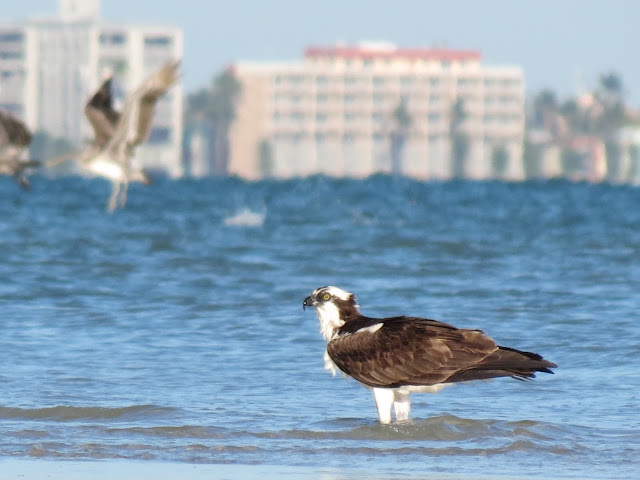 |
| Osprey on Sanibel Island (looking on to the coastline of mainland Florida in the distance). I read there are more then 100 nests of Osprey on Sanibel. They were everywhere! |
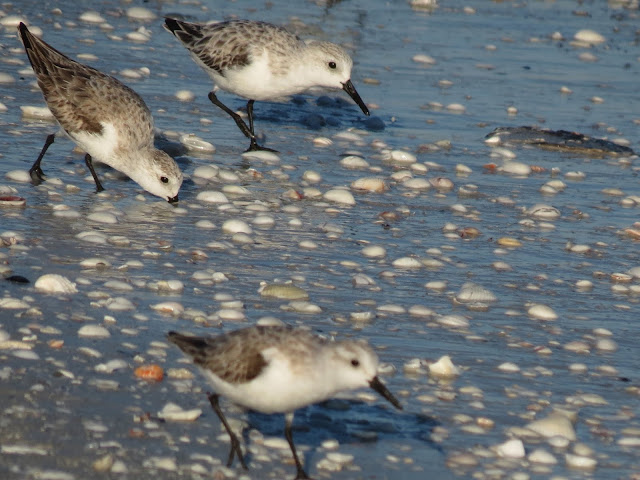 |
| Sanderlings were chasing these tiny mole-crabs (I think). Always shorebird company on the beach! |
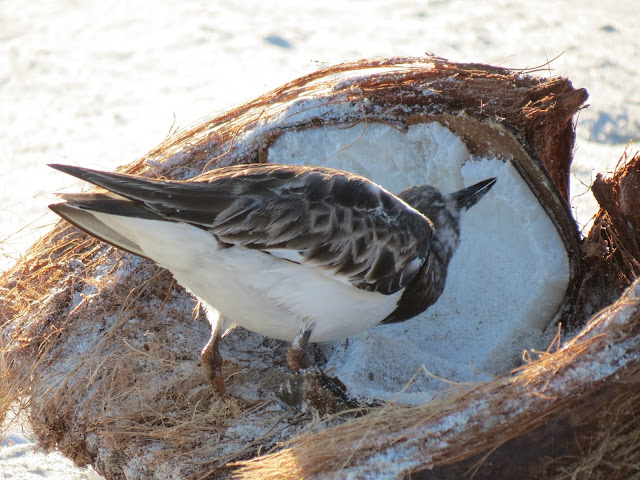 |
| The Ruddy Turnstone is said to have one of the most varied diets of any shorebird species. Besides the 'normal' foods taken on beaches, a considerable variety of 'unusual' foods has also been published in the scientific literature. Items eaten include: soap, gull excrement, dog food, potato peels, cheese, and the flesh of dead animals, including birds, a sheep, a wolf, a cat, and a human corpse (read Mercer 1966, about the corpse!). However on Sanibel, I discovered they have an interest in coconuts and pizza too. (I recalled Mercer from my days at University). |
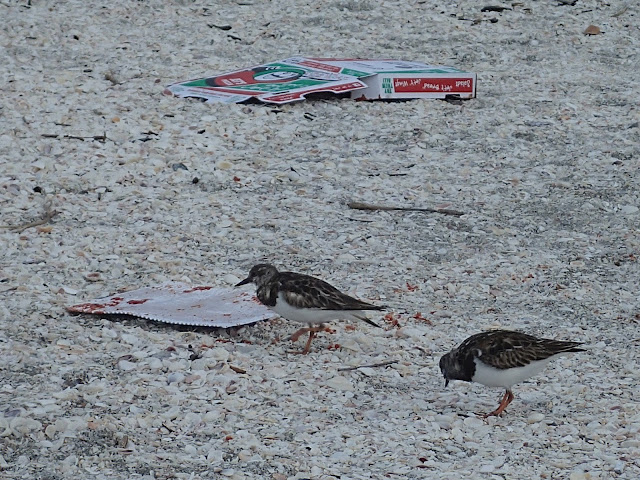 |
| They eat Pizza too. |
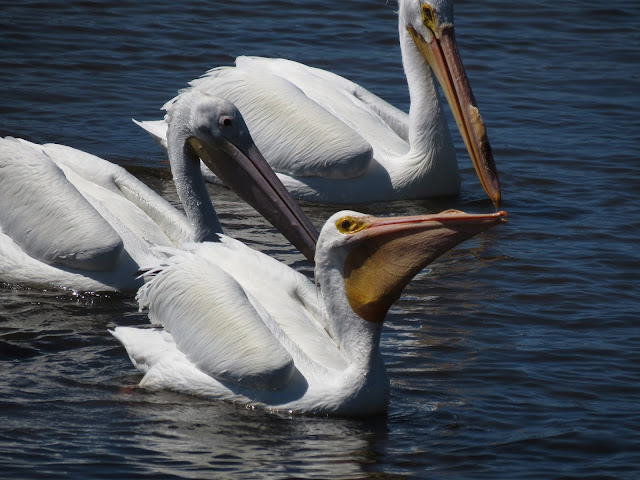 |
| American White Pelicans Ding Darling NWR |
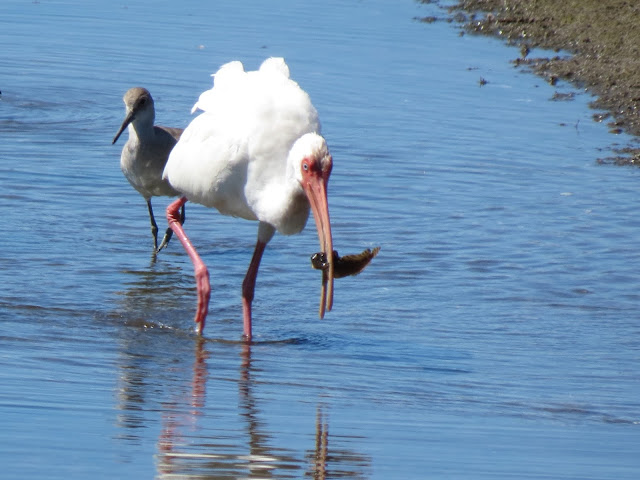 |
| Willet, White Ibis with unidentified fish in lagoon at Ding Darling NWR. |
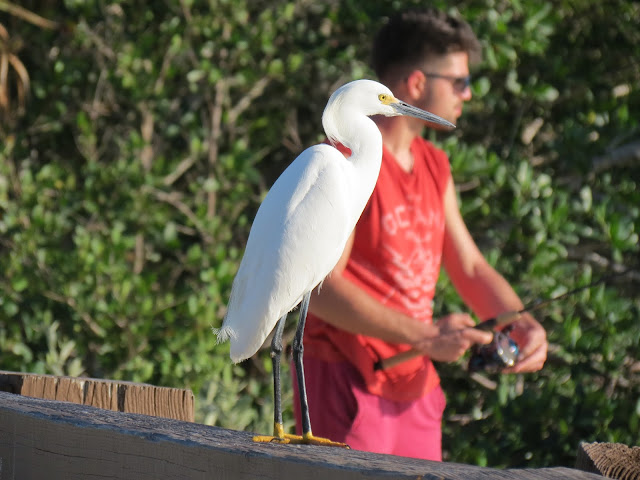 |
| Fishing permitted: Snowy Egret and Dimitri spinning for Snook at Ding Darling NWR. |
 |
| Ding Darling NWR |
 |
| This is a large anole, I think it is the Cuban one that has been introduced. |
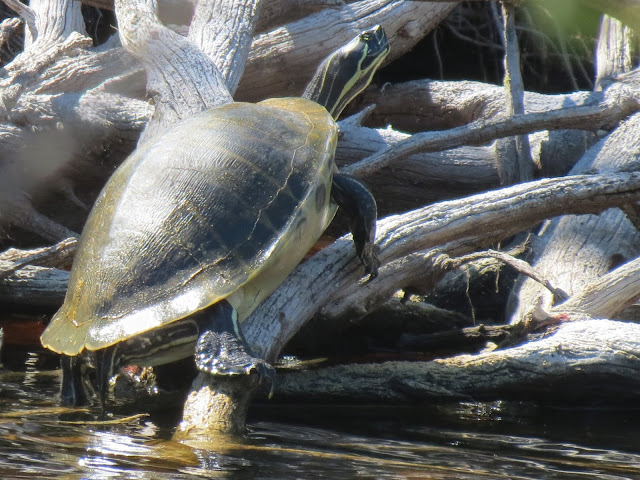 |
| One of at least 3 turtle species at Ding Darling NWR, this one at Baily Tract. (We also spotted a soft-shelled turtle Trionyx on the mainland). |
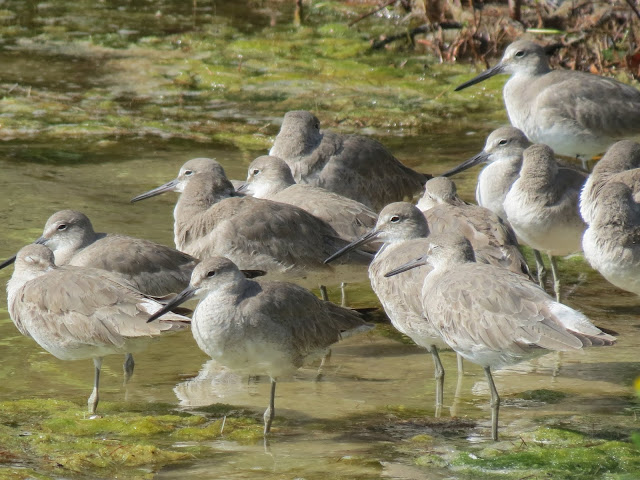 |
| Willet at roost on high tide, Ding Darling NWR. |
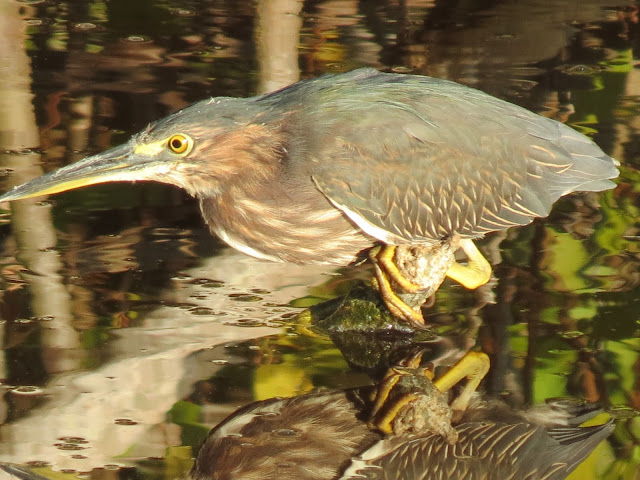 |
| Green Heron, Ding Darling NWR. |
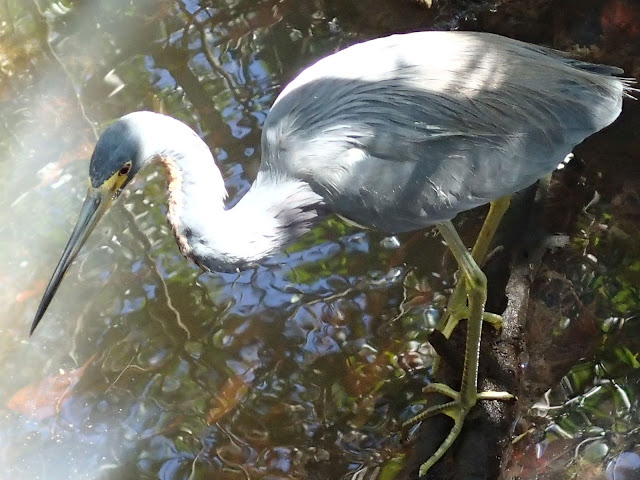 |
| Tri-coloured Heron in the Mangrove feeding on mollies at Ding Darling NWR.. |
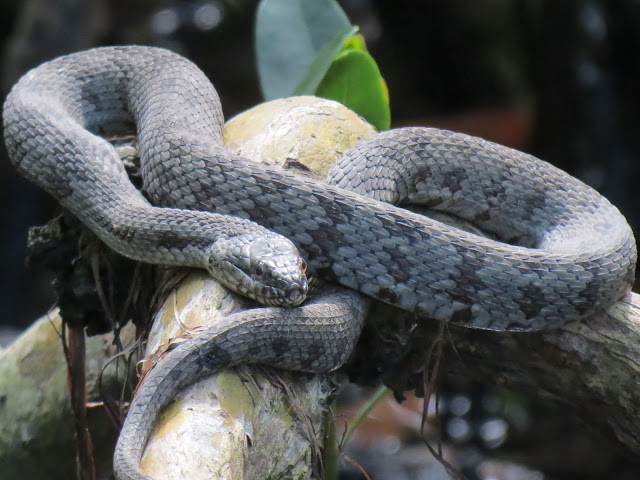 |
| Water snake in the Mangroves at Ding Darling NWR (they are common and easy to see at one location with a board-walk). |
 |
| An evening-time Green Heron, looking more greenish, Ding Darling NWR.. |
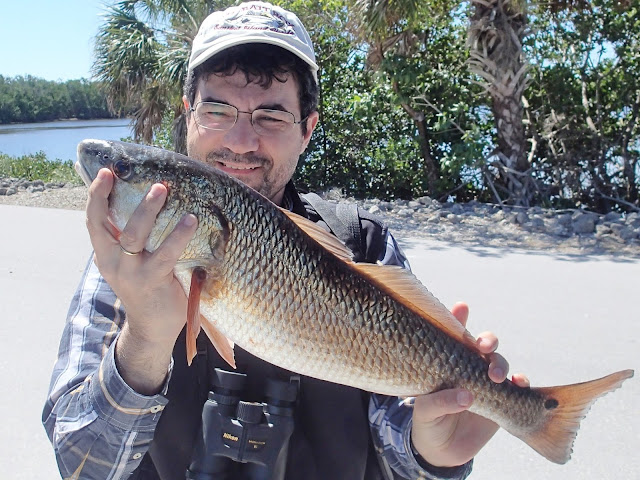 |
| I did not catch this wonderful Red Drum. At the lagoon in Ding Darling NWR. |
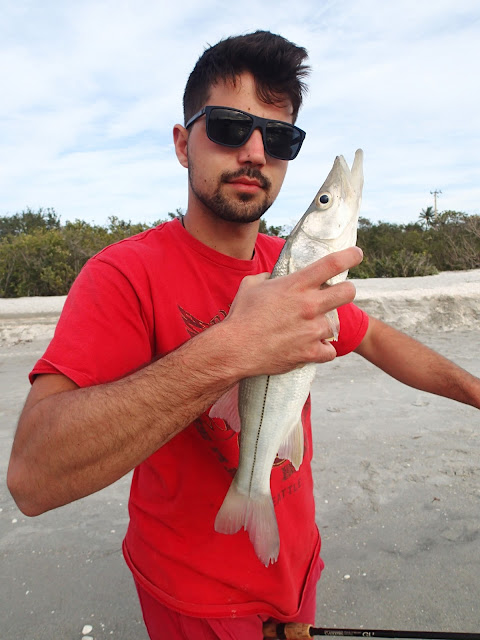 |
| Dimitri with Snook at the Blind Pass. One of many caught with Rich's expert guidance and patience.... |
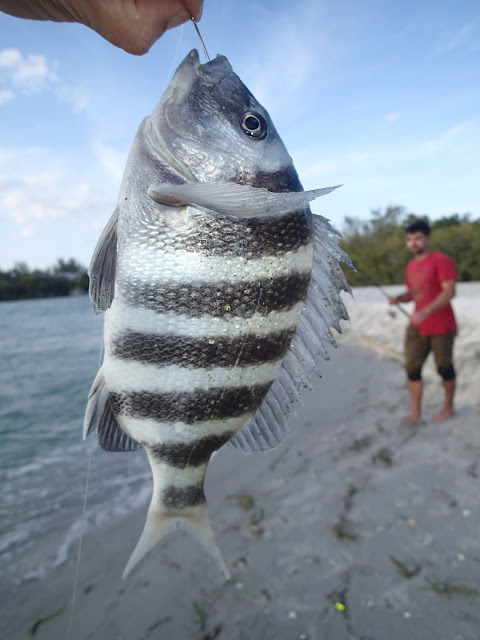 |
| My first ever Sheepshead, Blind Pass. |
 |
| A common sparid, Blind Pass. |
 |
| Whiteling, Blind Pass. |
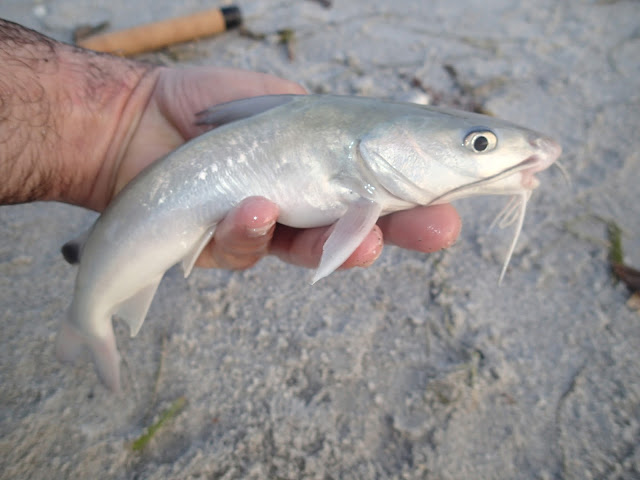 |
| Catfish, Blind Pass. |
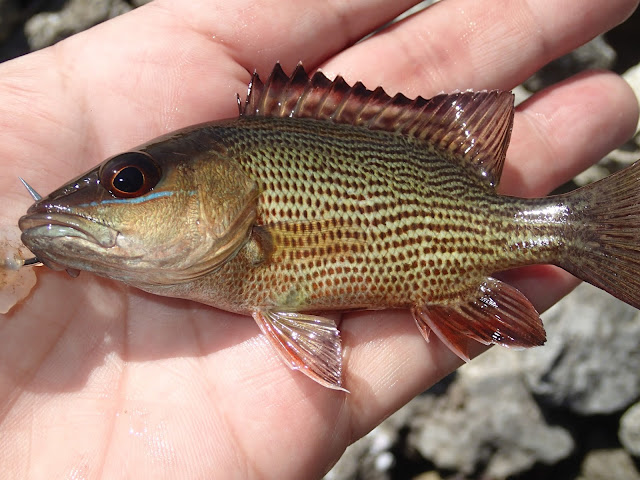 |
| Mangrove Snapper, Lagoon, Ding Darling NWR. |
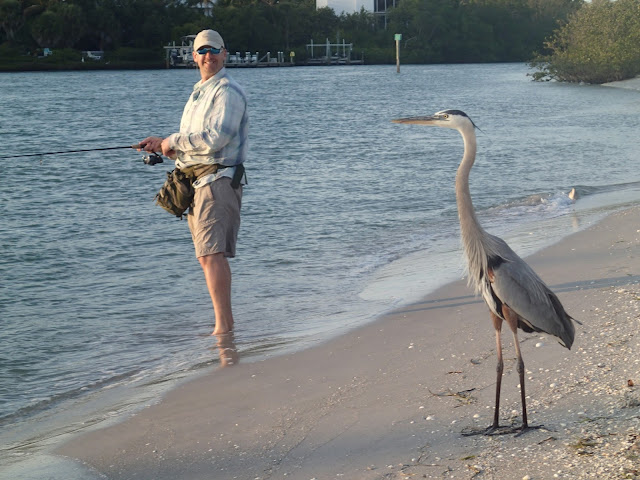 |
| Rich, our expert guide and best friend with GBH. |
 |
| This is another of those subtropical sea-basses, the Spotted Sea Trout. |
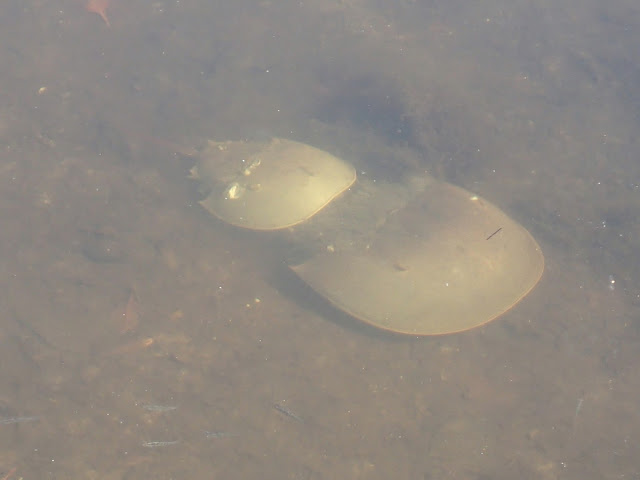 |
| Mating Horseshow Crabs, Lagoon, Ding Darling NWR. We saw them only twice - a lifer... and major "EVENT" for me... |
 |
| A young Racer. On Sanibel I spotted them on two occasions; this one at Ding Darling NWR where Vasso got bitten by the nasty fire ants.... |
 |
| Cayo Costa Island. Our cousin Michael and friend landing us on beach. |
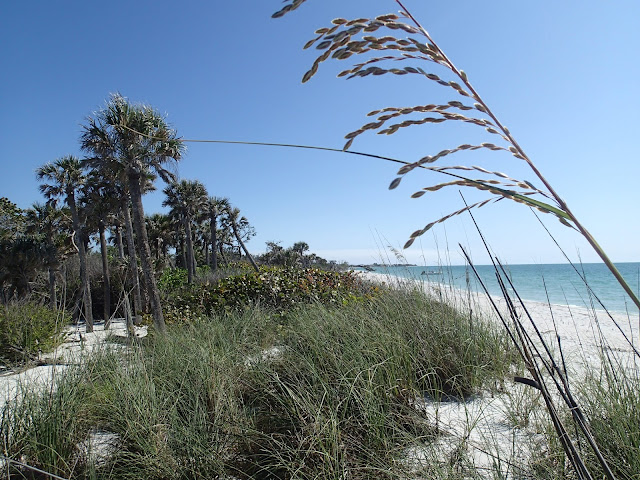 |
| Natural vegetation at Cayo Costa. |
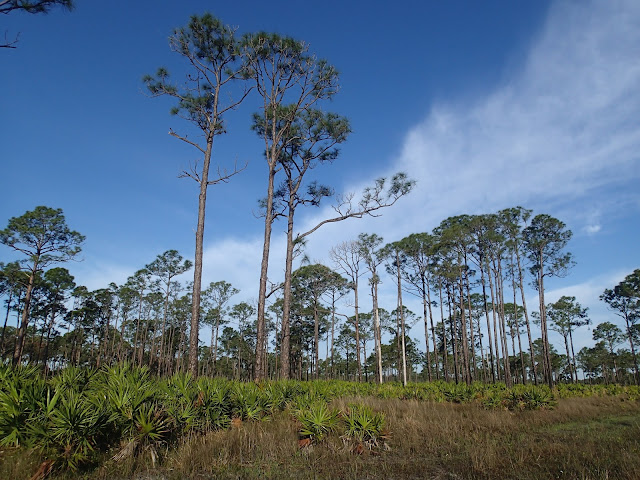 |
| Wonderful pine and palmetto savanna and woods at Babcock-Webb (1.5 hrs from Sanibel). |
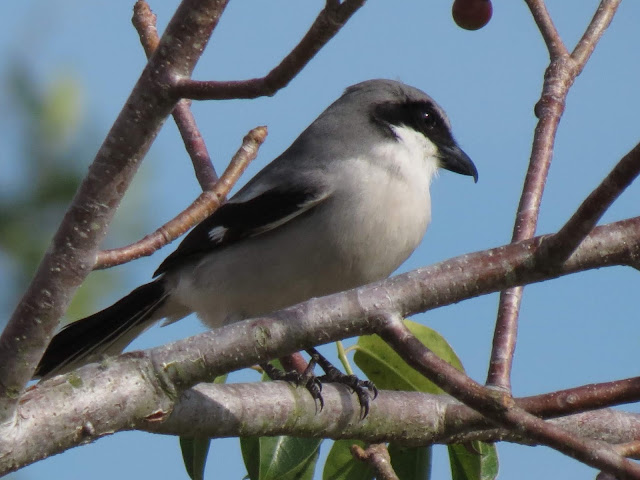 |
| We had singing Loggerhead Shrikes at Babcock-Webb, this one is from a stop near Fort Meyers Airport. |
 |
| Boat-tailed Grackles are common throughout the region, here on a pine in the Savannas of Babcock-Webb. |
 |
| Although we were looking for Red-cockated, these wonderful male Downy Woodpeckers were a treat for me at Babcock-Webb. |
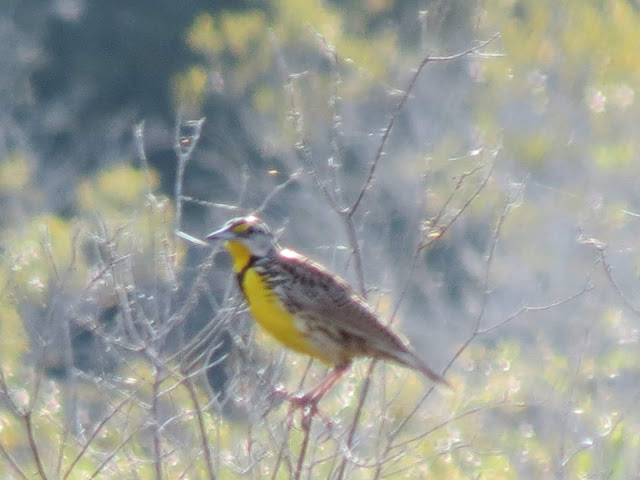 |
| We could here Sandhill Cranes singing and Eastern Meadowlarks, Babcock-Webb. |
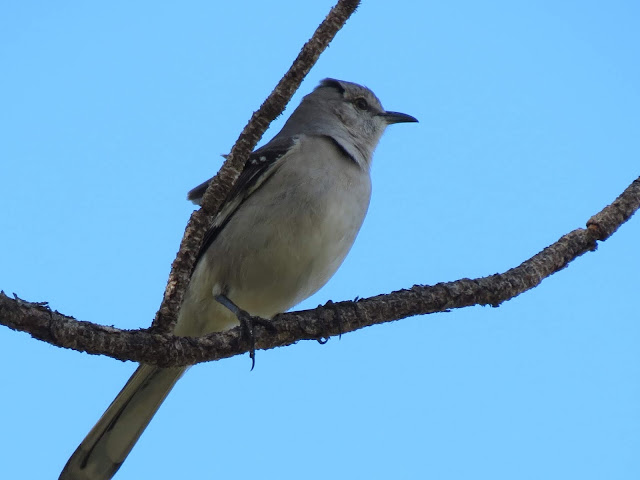 |
| Mockingbird, Babcock-Webb. |
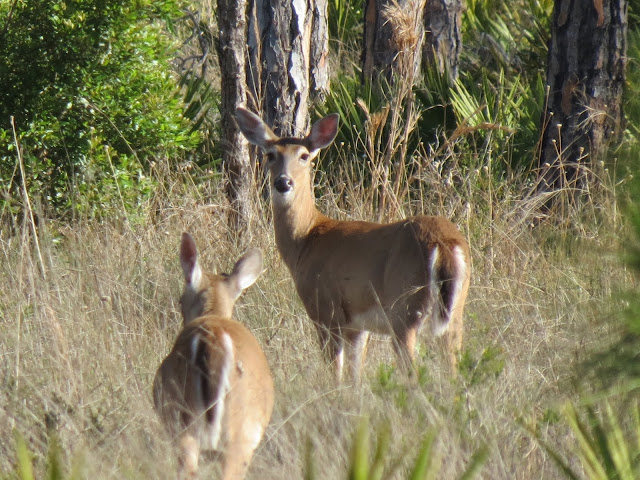 |
| White-tailed deer at Babcock-Webb. |
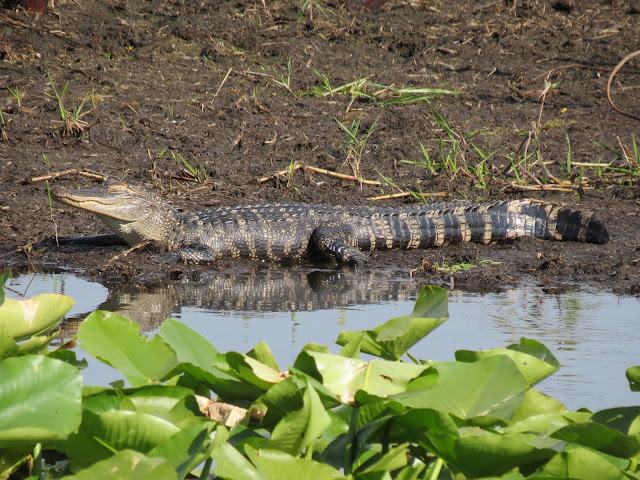 |
| Young alligators, very common in all waters at Babcock-Webb. |
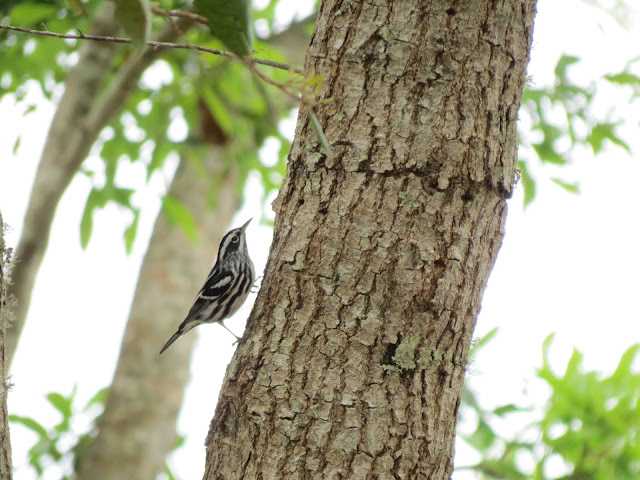 |
| Black-and-white warbler, Charlotte Harbor Environmental Center. |
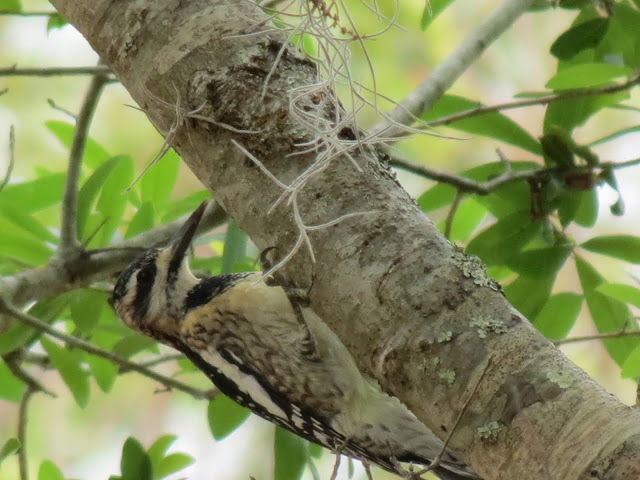 |
| Yellow-bellied Sapsucker, Charlotte Harbor Environmental Center. |
 |
| The majestic Cyprus forests of Corkscrew Audubon Reserve (1.5 hrs from Sanibel). |
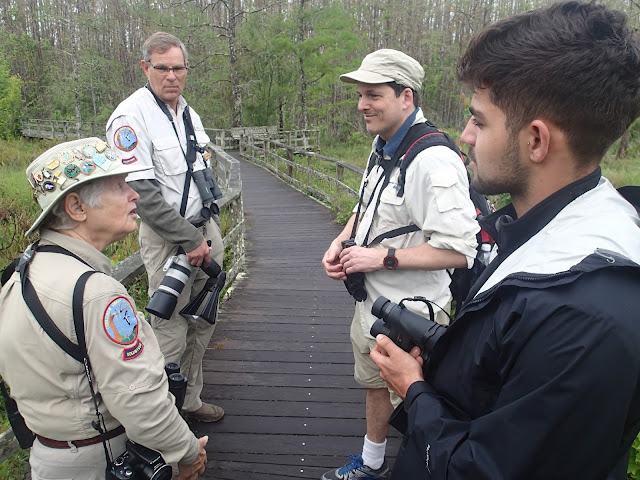 |
| Corkscrew Audubon Reserve: these are volunteer wardens, with Jim and Dimitri. |
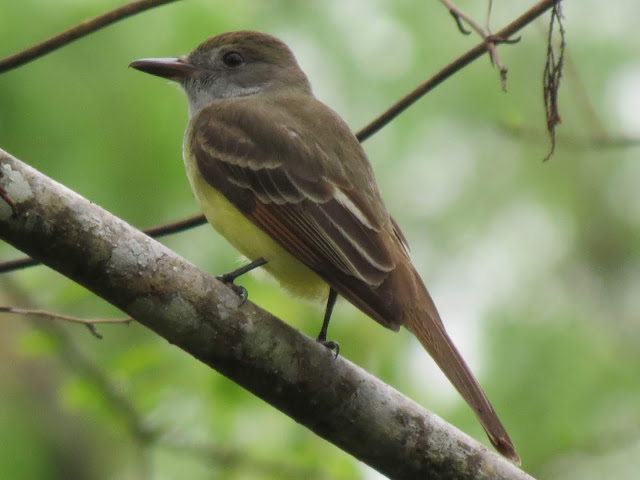 |
Great Crested Flycatcher (Myiarchus crinitus) one of the best birds Jim showed us on the walk at Corkscrew.
|
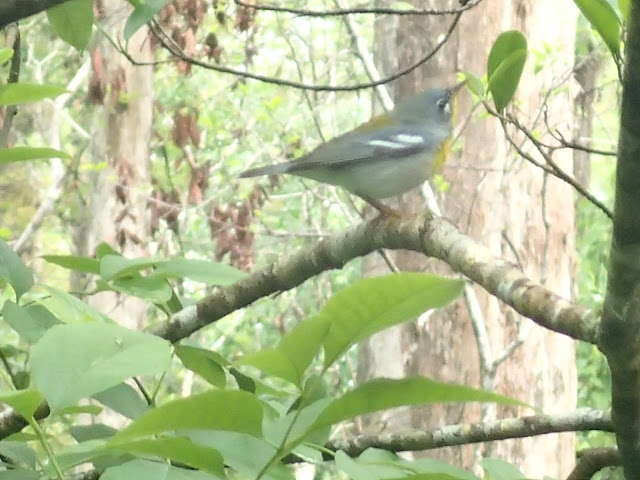 |
| Northern Parula, Corkscrew Audubon Reserve. |
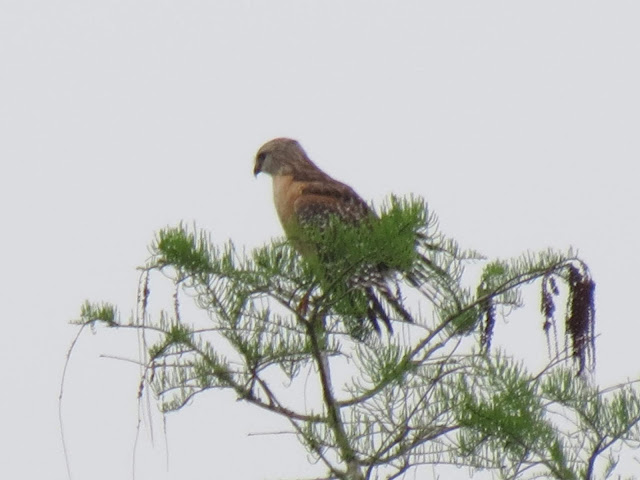 |
| Red-shouldered Hawk, Corkscrew. |
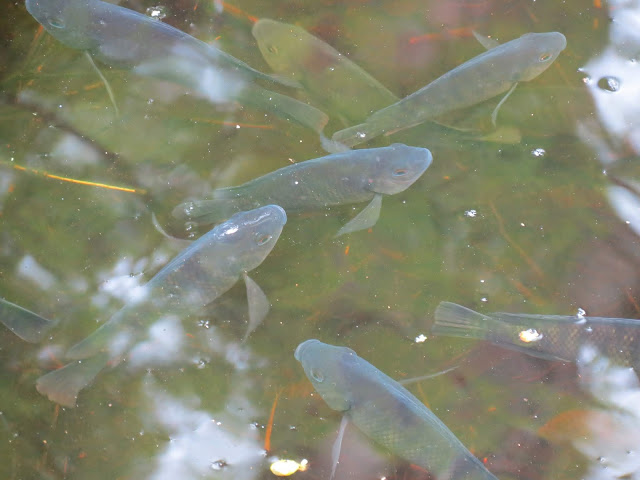 |
| Huge cichlid-like fishes at Corkscrew. |
 |
| The notorious Water Moccasin (!!!) at Corkscrew. |
 |
| Best bird of the day: Painted Bunting (Corkscrew feeder). |
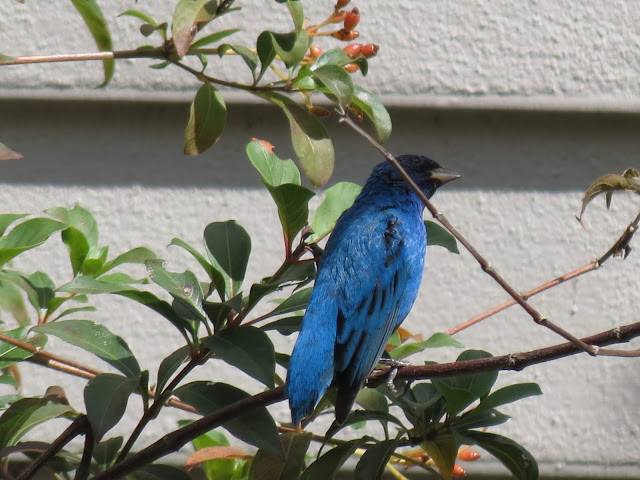 |
| Another great bird of the day: Indigo Bunting (Corkscrew feeder). |
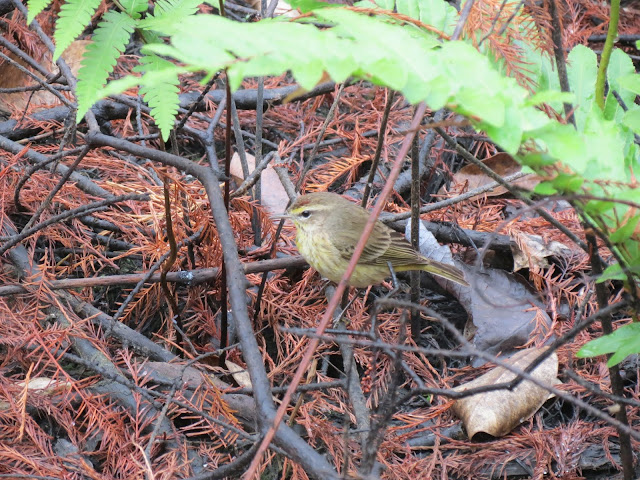 |
| Palm warbler, very common at Corkscrew. |
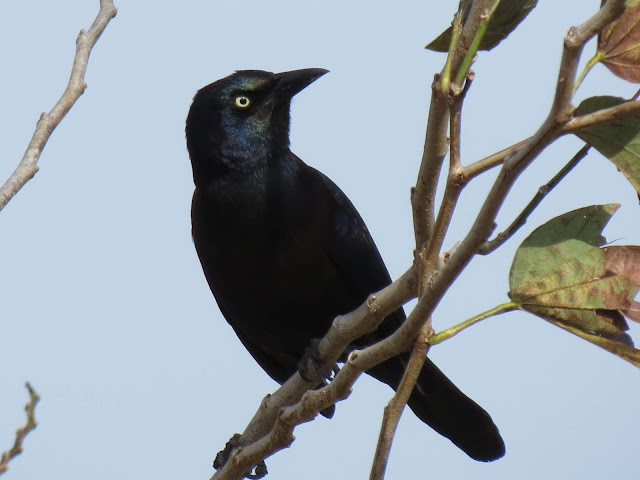 |
| Common Grackle. At stop near Fort Meyers Airport. |
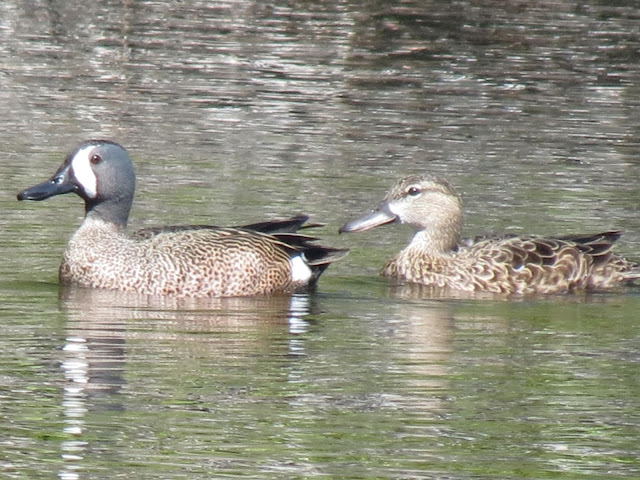 |
| Blue-winged Teal at Bailey Tract, Sanibel. |
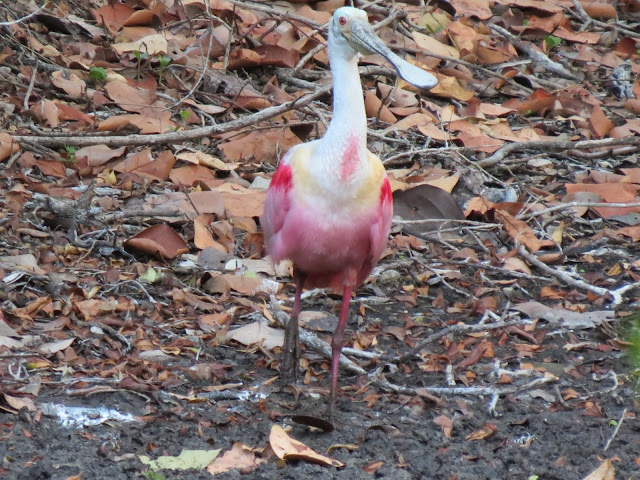 |
| Roseate Spoonbill, there are not common, we had scattered sightings like this near the visitors center, Ding Darling NWR. |
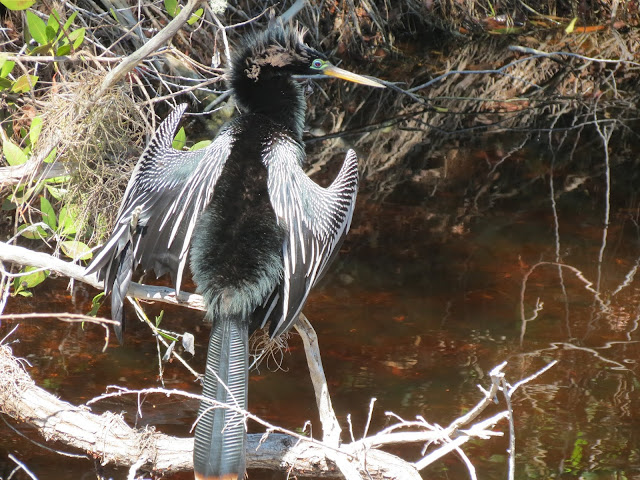 |
| Anhingas are common. Bailey Tract, Sanibel. |
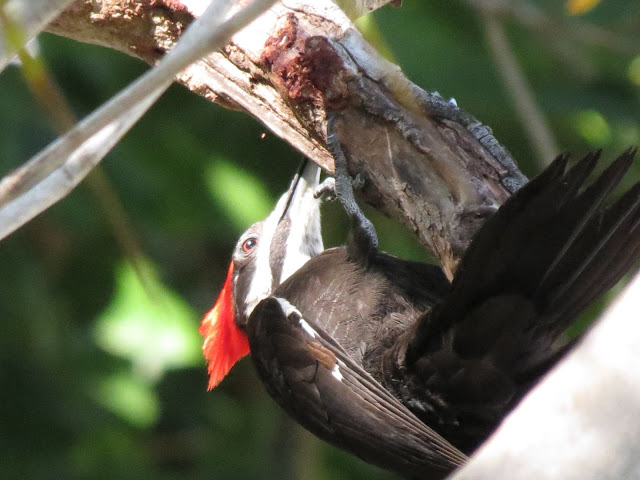 |
| Pileated Woodpecker is a fairly common suburban bird on Sanibel Island. |
 |
| With the kindest uncle around, Deane Manolis. |
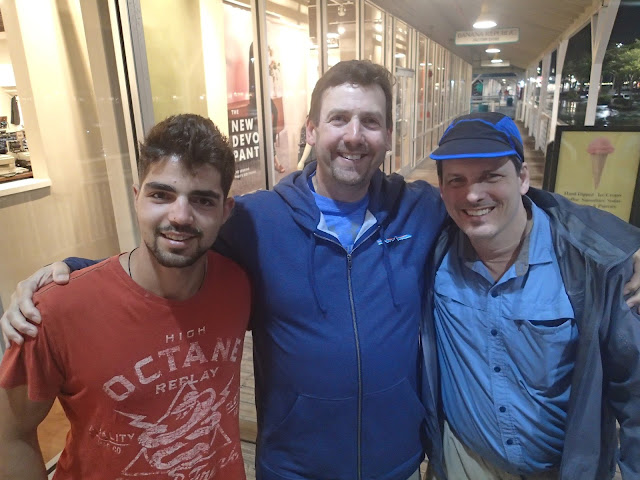 |
| Dimitri, Rich, Jim. |
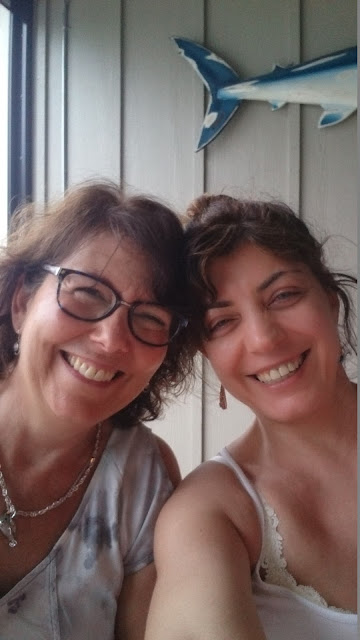 |
| Amy and Vasso, cousins and good friends. |
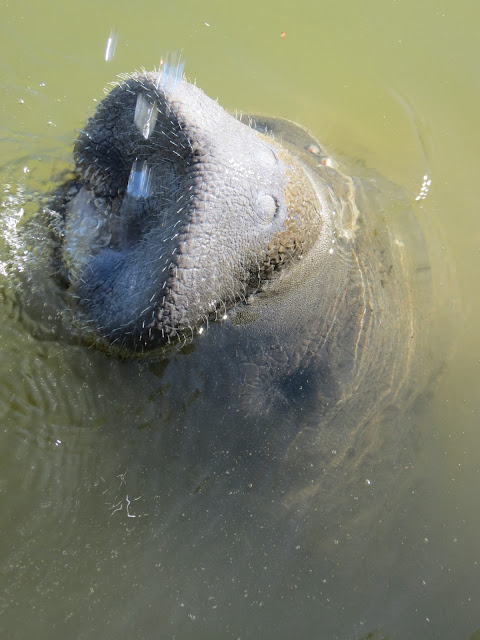 |
| Manatee enjoying some freshwater from a garden hose. |
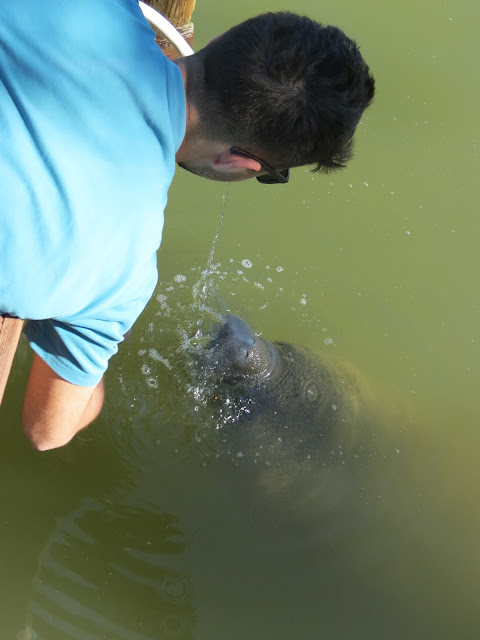 |
| Give water to a Manatee. |
 |
| This little easy holder-folder on the display panels gives the day's or week's birds at the reserve (Bailey Tract, Sanibel). |
 |
| Simple photographic account, but effective. |
 |
| My first Forester's Tern among Laughing Gulls. Sanibel Beach. |
 |
| One of the beaches on Sanibel. |
 |
| This is a nice map of the islands focusing on the natural wonders. |
 |
| And this map shows how much a major barrier island this is - the inner "sound" is really a massive open coastal lagoon system - the largest I have ever seen. |
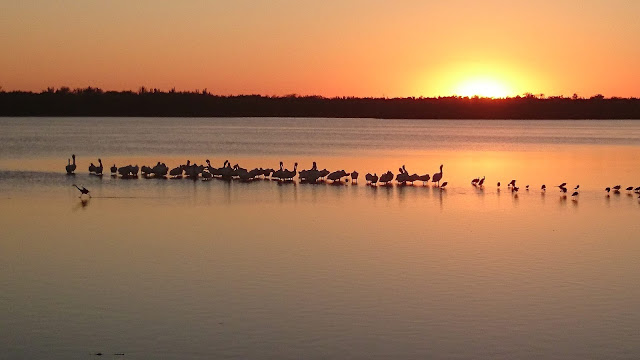 |
| Don't miss the sunset at Ding Darling... |
 |
Miami Beach at the end of our tour; we were so happy!! The times with the Manolis family, a true family trip, the greatest family vacation we have ever had!
|



